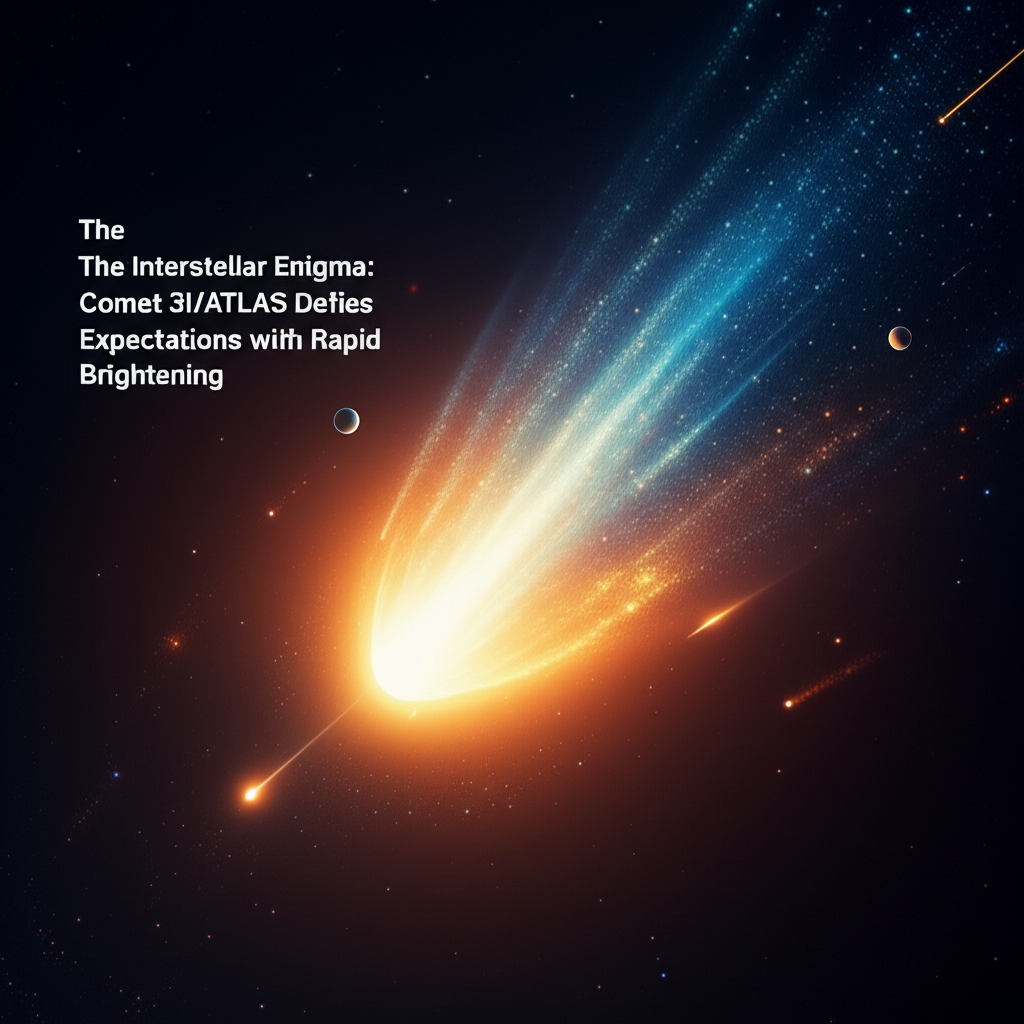The Interstellar Enigma: Comet 3I/ATLAS Defies Expectations with Rapid Brightening
Our solar system's fleeting guest, Comet 3I/ATLAS, continues to astonish scientists with its unpredictable behavior.

Comet 3I/ATLAS isn't just any ordinary space rock; it's an interstellar invader, the third such object ever confirmed to originate from beyond our solar system. Discovered relatively recently, this cosmic wanderer has been under intense scrutiny from astronomers worldwide. As it recently made its closest approach to the Sun, experts anticipated certain behaviors, but the comet had a different plan, unveiling a dramatic and unexpected brightening that has left the scientific community buzzing with questions.
A Visitor From Another Star System
Unlike periodic comets that orbit our Sun or long-period comets from the Oort Cloud, 3I/ATLAS hails from another star system entirely. Its '3I' designation stands for 'third interstellar object,' placing it in an exclusive club alongside 'Oumuamua and Comet 2I/Borisov. These objects offer a unique opportunity to study material from distant stellar nurseries, providing crucial insights into the chemical and physical processes happening far beyond our cosmic neighborhood.

Initially, 3I/ATLAS followed a relatively predictable trajectory, but its recent behavior has been anything but. The comet's brightness increased at an unexpectedly rapid pace, far exceeding typical expectations for a body of its size and composition. This surge in luminosity suggests a more vigorous outgassing of volatile materials than anticipated, or perhaps even a fragmentation event, though further observations are needed to confirm.
What's Behind the Dazzling Display?
The rapid brightening is particularly intriguing because of 3I/ATLAS's interstellar origin. Comets from our own solar system typically have a well-understood composition, but an object from another star could be made of entirely different stuff. Experts are considering several hypotheses:
- 🔬 Unusual Volatiles: The comet might contain highly volatile compounds that sublimate at lower temperatures or more rapidly than water ice, causing a sudden burst of activity.
- 💥 Internal Structure: It could possess a unique internal structure, where a thin, easily eroded outer layer gives way to a highly volatile core upon solar heating.
- ⭐ Fracturing Event: The intense solar radiation might be causing the comet to break apart, exposing fresh, icy surfaces to the sun and significantly increasing its reflective area and outgassing.

Implications for Interstellar Object Studies
The behavior of Comet 3I/ATLAS is not just a fascinating spectacle; it's a critical piece of the puzzle in understanding the diversity of planet-forming materials across the galaxy. Each interstellar object offers a fleeting glimpse into the conditions of another star system. This unexpected brightening could indicate that interstellar comets might be far more dynamic and varied than previously thought, or it might reveal specific processes that occur when such an object enters the inner regions of a new star system.
Astronomers are continuing to observe 3I/ATLAS with ground-based and space-based telescopes, eager to gather more data before it recedes into the interstellar void. Its unpredictable nature serves as a potent reminder of the vast, unexplored mysteries that lie beyond our solar system, challenging our assumptions and pushing the boundaries of what we know about cosmic evolution.





